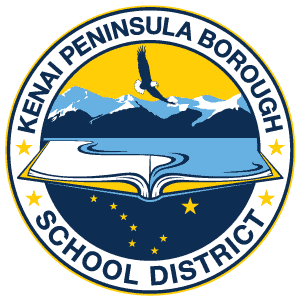- Prerequisite Course(s): Foods 1
- High School Credit = 1/2 credit per semester (Postsecondary credit = 0)
- This course will be offered: every year
- Pathway (Optional): Restaurants and Food/Beverage Services
- Career Cluster Area: Hospitality & Tourism
- Source of Occupational Skills Standards: Alaska Family and Consumer Science (AKFCS)
- Eligibility for Nationally Recognized Skill Certificate(s)/State License? No
- Tech Prep: No
- Is this course brokered through another institution or agency? No
- Course Description: This course is designed to introduce students to occupational food service. Emphasis is placed on learning and practicing job and work place skills.
- Content Headings/Topics
- Workplace skills
- Safety and sanitation
- Standardized quantity recipes
- Weights and measures
- Portion and cost control
- Recipe adjustment
- Menu planning
- Table setting and service
- Quantity food preparation
- Food service industry
- Career exploration
| Performance Standards (Learner Outcomes) | Specific Occupational Skills Standards | Alaska Reading, Writing, Math, Science Performance Standards | Alaska Content Standards | Alaska Employability Standards | Alaska Cultural Standards | All Aspects of Industry | Assessments |
|---|---|---|---|---|---|---|---|
| 1. Describe and model effective workplace skills: communication, decision making, collaboration, team building, and problem solving. | AKFCS E3 | LA A | A5 | C4 D6 | Work Habits | Lab Assignments | |
| 2. Explain the causes of food-borne illnesses and ways to prevent them. | AKFCS C7 | LA D | C3 | Health / Safety | Oral Presentation | ||
| 3. Practice correct sanitation and safety procedures. | AKFCS C7 | HL A | A6 | C3 | Health / Safety | Lab Assignment | |
| 4. Define and identify the advantages of a “standardized recipe.” | AKFCS C10 | LA D | Pre / Post Test | ||||
| 5. Identify, describe, and model the parts of a standardized quantity recipe and how to use it. | AKFCS C10 | Planning | Pre / Post Test | ||||
| 6. Identify the measures of volume and weight and the equipment used for each. | AKFCS C10 | A1.4.4 | Math E | Technical Skills | Pre / Post Test | ||
| 7. Describe and model the correct ways to measure and weigh ingredients accurately. | AKFCS C10 | A2.4.2 | Math E | Pre / Post Test | |||
| 8. Discuss why portion control is important and some problems that may occur due to a lack of it. | AKFCS C10 | Planning | Classroom Discussion | ||||
| 9. Describe and model correct food portioning methods. | AKFCS C10 | A2.4.3 | Math E | Pre / Post Test | |||
| 10. Calculate food costs accurately. | AKFCS C10 | A2.4.3 | Math E | Technical Skills | Lab Assignment | ||
| 11. Adjust recipes accurately | AKFCS C10 | Math E | Technical Skills | Lab Assignment | |||
| 12. List the typical meal patterns and explain the basic principles of planning them. | AKFCS C10 | W4.3 W4.4 | Planning | Lab Assignment | |||
| 13. Prepare a luncheon menu. | AKFCS C10 | W4.3 W4.4 | D3 | Planning | Lab Assignment | ||
| 14. Describe and model how to set and serve a luncheon and dinner table. | AKFCS C10 | D3 | Pre / Post Test | ||||
| 15. Describe and model quantity food preparation techniques. | AKFCS C10 | Pre / Post Test | |||||
| 16. List and define the major types of food service operations. | AKFCS C10 | W4.3 W4.4 | B2 | Management | Lab Assignment | ||
| 17. Explain the advantages and disadvantages of working in the food service industry. | AKFCS E7 | LA D | B2 | D6 E7 | Labor | Classroom Discussion | |
| 18. Use a variety of information sources to research food service careers and education / training. | AKFCS E9 | R4.10 | B4 | B4 | Technical Skills | Classroom Discussion |
